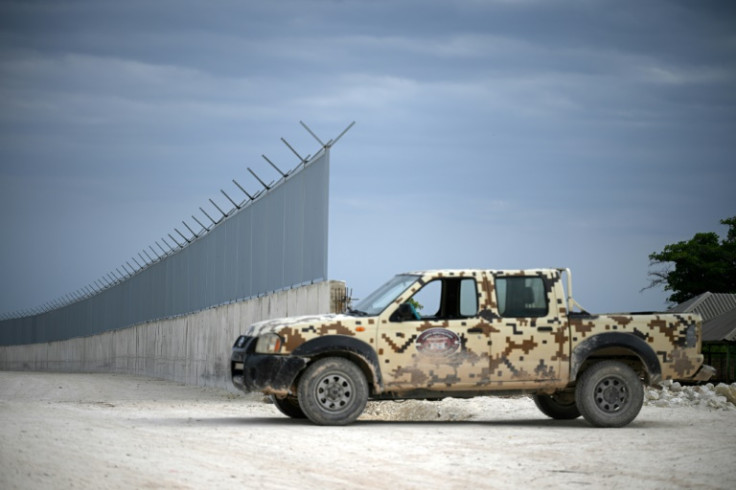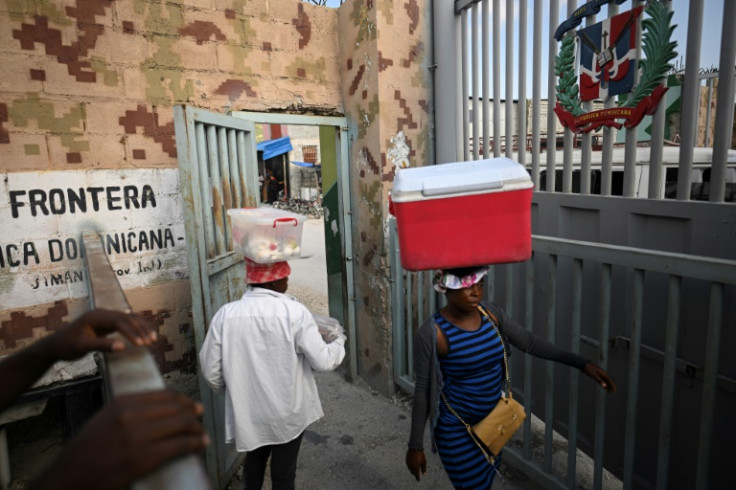
A prison-like watchtower casts a pall over an otherwise idyllic tropical beach in the Dominican Republic's extreme southwest.
It is the starting point of a 164-kilometer (102-mile) wall the Caribbean nation is building between itself and violence-plagued Haiti, its only neighbor on the shared island of Hispaniola.
As Dominicans cast their ballots in the presidential election on Sunday, the wall -- a flagship project of incumbent Luis Abinader -- stands as a symbol of his tough, and popular, stance on migration.
Under Abinader, who polls show will likely be reelected for a second four-year term, the country has boosted immigration raids and deported hundreds of thousands of Haitians, many of whom had lived there for decades.
Abinader closed the 340-kilometer border last September in a dispute over a shared river and partially reopened it in October -- though only to goods, not people.
Construction on the wall started in 2022, and Abinader has boasted it will "forever change the Dominican Republic" -- a tourist paradise with a fast-growing economy.
Haiti, by contrast, is one of the world's poorest and most violent countries.
Abinader has vowed to speed up construction of the wall, most of which remains unfinished.
The beach city of Pedernales is home to the southernmost of four Haiti-Dominican border crossings, each with a so-called "free zone" where people from both sides can buy and sell goods at the marketplace before returning to their respective homes.
The wall -- built in concrete up to 1.5 meters above ground with two meters of wire fencing on top -- links the four crossings as it zig-zags across the landscape from south to north.
Abinader claims theft of cattle and motorcycles has dropped 80 percent in some areas on the Dominican side since construction began, and argues the wall protects jobs and trade.
Seventy percent of Dominicans support the project, polls show.
"It will help to have certain controls... (It is) necessary," said Odanis Grullon, 29, the owner of a beach restaurant in Pedernales.
At the nearby border crossing, children play as trucks cross back and forth with clothes, food and household items for the market.
A rudimentary barrier resembling an old farm gate stands mostly open as armed soldiers observe the comings and goings without interfering much.
The people of Pedernales point out that theirs is not the most fraught border crossing, being the furthest from Haiti's crime-riddled capital Port-au-Prince.
"Gang members don't come here. Sometimes things happen, but they are cool, they are brothers," community leader Eleodoro Matos said.
He is, however, in favor of the wall -- citing cattle theft in particular.
Further north, at the Jimani border crossing, the situation is quite different.
Haitian Creole rather than Spanish is the dominant language, and the gates are made of steel.
There are military patrols and many checkpoints on the roads. Even approaching the wall is off limits: "These are our orders," the soldiers say.
But for Juan Enrique Matos, a trader at the local "free zone" market: "The wall doesn't work here."
Haitians, he told AFP, "give their money to the guards and they let them through. It's a business."
Residents say it's also relatively easy to cross at other points, far from the official posts, through the mountains and valleys along the border.
Dominican trader Brian Baptista, 25, told AFP that Haitians "go through where they want, through the countryside or through the gate."
Some believe a wall may not be the best approach to the very real problems plaguing the island.
"Migration pressure is not reduced by... infrastructure," Juan Del Rosario, a university expert in economic integration, told AFP.
While the wall may have reduced cross-border theft, he added, "illicit goods such as drugs and weapons" continue to get through.










